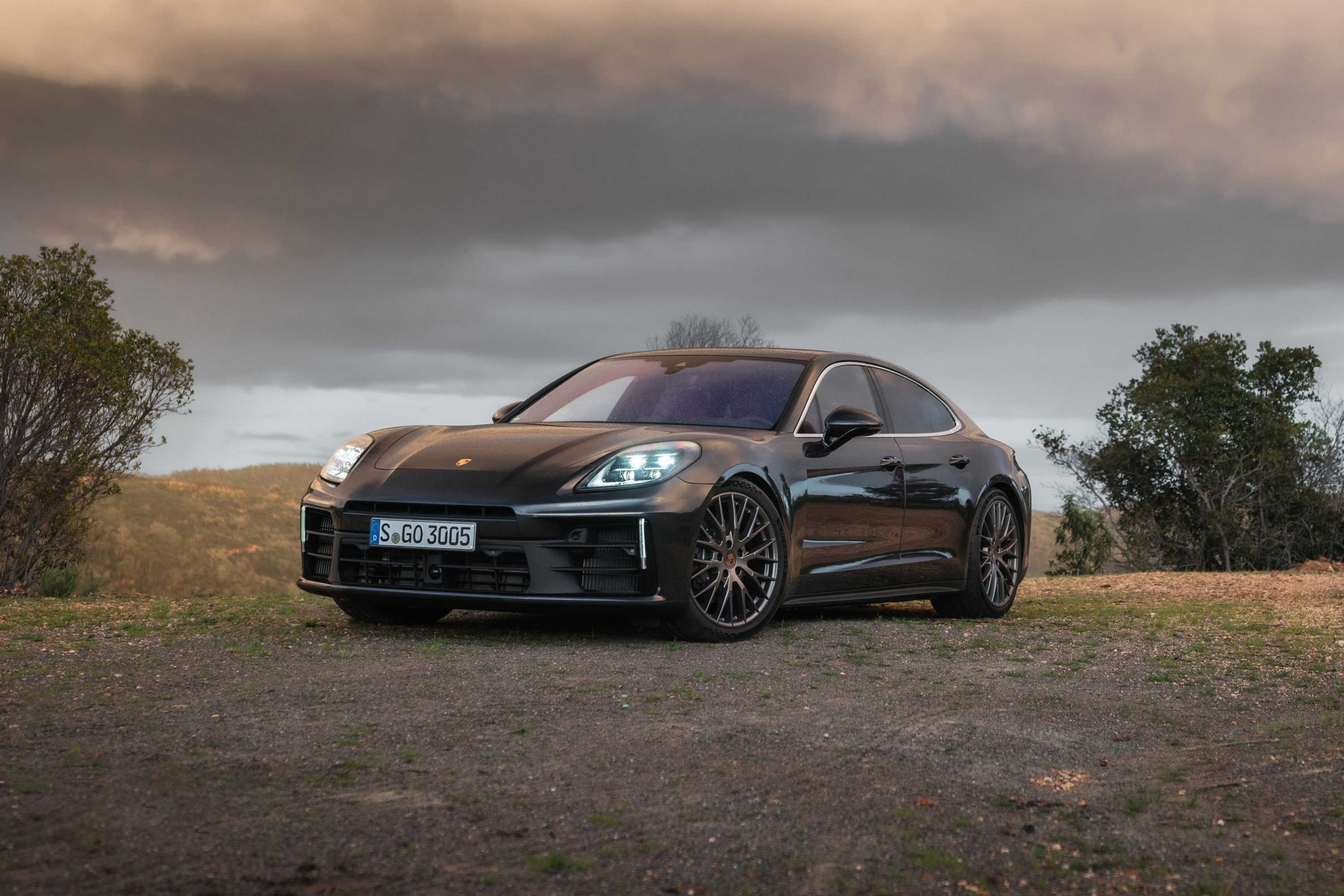
2025 PORSCHE PANAMERA REVIEW: EFFICIENT, EXPENSIVE AND LUXURIOUS
The Porsche Panamera is keeping consistent with its low-slung sports sedan as many of its German rivals bend and twist their respective lineups to field a competitor against the 911-like sedan.
Unlike the 911, the Panamera has always kept its engine in front, and now there are several options to fill that space for its third generation including new fuel-efficient plug-in hybrid models.
The four- or five-passenger sedan is offered in seven trims overall starting with this rear-drive Panamera for $102,800. All-wheel drive adds $7,000.
The two upgraded plug-in hybrids (Panamera 4 E-Hybrid for $115,500 and Panamera 4S E-Hybrid for $126,800) add power, along with 30 miles of all-electric range.
And the range toppers remain, including the 493-horsepower all-wheel drive Panamera GTS (the lower-priced 4S E-Hybrid makes more power at 536-hp), and the Panamera Turbo E-Hybrid and Panamera Turbo S E-Hybrid, the latter with a base price of $226,500.
Exterior changes are minimal for the 2025 model year with an additional air inlet in the front, newly designed window lines that sit flush with the body.
The Panamera 4 tested here (and the all-wheel drive Panamera 4) features the company's turbocharged 2.9-liter six-cylinder ending that now develops 348 hp and 368 pound-feet (lb-ft) of torque, an increase of 23 hp and 37 lb-ft compared to the previous model. The basic Panamera can accelerate from 0 to 60 mph in 5 seconds while top speed is 169 mph.
In its Normal drive mode the Panamera feels a little sluggish. Acceleration is fine for a normal car, but feels a little understated for a Porsche, even though this is the base model. It's great in traffic and lovely on the expressway at near illegal speeds. However, Sport and Sport Plus drive modes turns up the settings of the accelerator and transmission, making this feel like a true Porsche.
The car's engine has been around for almost a decade now (it used to be in the Macan SUV), but it has been tweaked and prodded to make it very smooth and with a clean, rising exhaust sound. (It used to drone at constant speeds.)
Downshifts come quickly when necessary and the sedan has great passing power. This non-hybrid model has standard, non-regenerative brakes that were plenty firm. A Sport Response button placed on the steering wheel turns all settings to maximum for 20 seconds.
Porsche rarely disappoints in the handling department and this base model Panamera sedan comes standard with a two-chamber, two-valve air suspension that also includes Porsche Active Suspension Management technology. The two-valve technology separates the control of compression and rebound of the damper meaning there's a greater variance between Comfort and Sport drive modes.
Available Rear-axle steering improves handling even further.
Even without rear steer, the Panamera handles better than almost anything on the road. The steering weight is a little heavier than most vehicles, but the control is direct. It's easy to put the wheels right on the edge of a turn and emergency avoidance moves are met with accurate controls.
A new optional active suspension keeps the body of the Panamera flat, even during heavy braking, steering and acceleration inputs. Around a turn, it lifts the outside of the vehicle, during braking it stiffens up the front so the car doesn't dip.
The cabin has a balance between analog and digital controls, though the triple screens on the dashboard may overwhelm the passengers at first. The new gear selector is positioned to the right of the steering wheel while the drive mode switch is on the wheel. As with other Porsches, it features a button in the middle that turns all settings to a maximum for 20 seconds.
A 10.9-inch passenger display is optional and can show the infotainment system and even video streaming while driving. As with other systems like this, the passenger display is not visible from the driver's seat.
Porsche annoyingly moved the vent controls to inside the touchscreen, which is a pain when quickly trying to adjust the air flow. It does have a dedicated climate panel below the screen for seat heat and temperature.
The back seats were great for kids with booster seats. Their design allows those boosters to sink into the buckets. Seatbelts were easy to attach.
As tested, the Panamera 4 came equipped with about $45,000 worth of options including a $4,330 leather interior, 21-inch wheels ($3,820) and a Burmester stereo system (over $7,000).
The BMW 8-Series ($90,800), Mercedes-Benz CLS ($76,500) and Audi A7 ($72,000) are the 2025 Porsche Panamera's main competitors. The Porsche handles the best, though the top versions of all three competitors have near supercar power, as does the top version of the Panamera. The Panamera is still the only one that offers a hybrid, and the only one with an all-electric range, though small.
The Audi is the best deal, and still a handsome, low, wide vehicle in the same vein as the Panamera. The S7 and RS7 variants are much faster and more expensive. The BMW 8-Series is also fun to drive and feels more aggressive than this Panamera in its base form. All are good choices, but those who want the most accurate steering and handling will go to the Porsche dealer first.
The 2025 Porsche Panamera is on sale now, arrival timing of the Panamera Turbo E-Hybrid will be announced later.
2024-09-05T09:16:52Z dg43tfdfdgfd